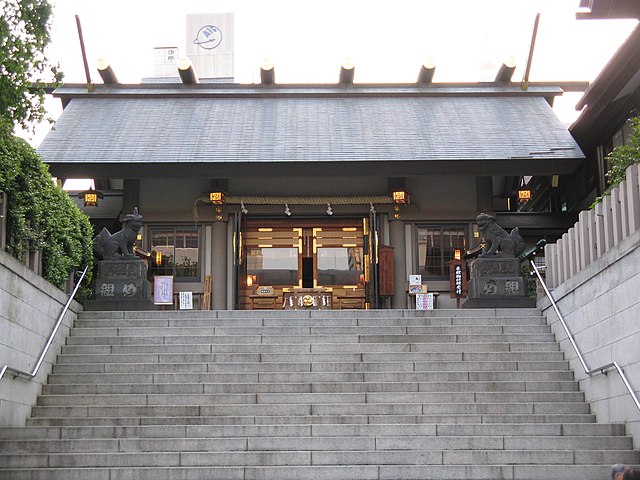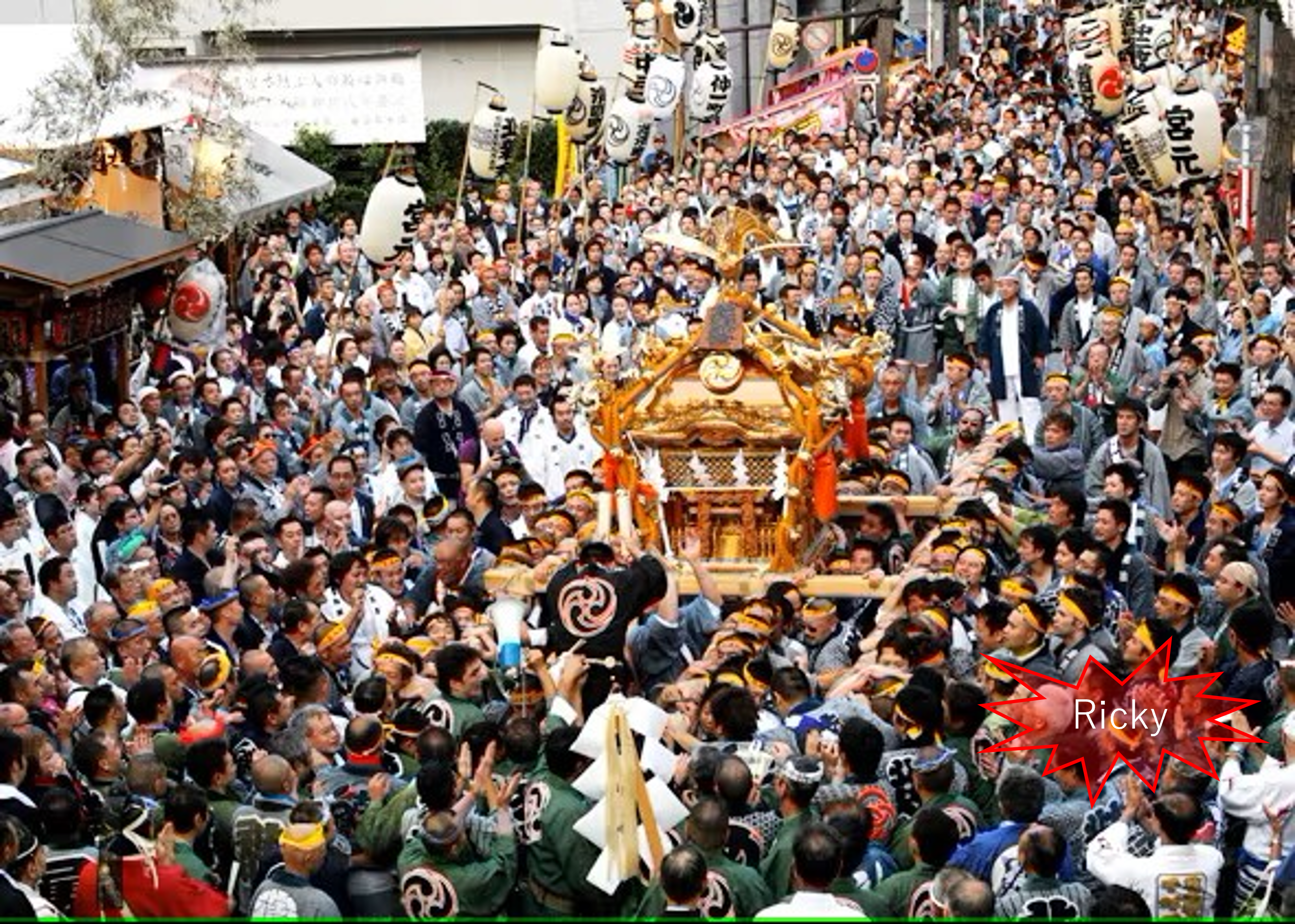Once, on my way home from a client, I was walking near Daimon Station when I caught a glimpse of some kind of festival being held across the street. I didn’t think anything of it at the time and continued on my way. I happened to have an opportunity to visit the business again, and as I was walking around the Daimon area again, I was surprised. To my surprise, the festival was being held again! I stopped in my tracks and said to myself, “It’s still going on? I had never seen a summer festival in Japan that lasted for more than a week. But upon closer inspection, I found that this festival lasts for 11 days! And the name of the festival is “Dara Dara Matsuri” (Dara Dara means “lazy” in Japanese). When I learned the name of the festival, I laughed at the simplicity of the name, but as I researched the origin of the festival, I learned that there is a history and meaning behind it. So this time, I would like to write about this “Dara-Dara-Matsuri.
What is the Dara Dara Festival?


The Dara Dara Matsuri at Shiba Daijingu Shrine is famous as one of the most representative autumn festivals in Edo Tokyo. While most shrine festivals in central Tokyo are held as summer festivals, the festival here is an autumn festival, which is appropriate for a shrine dedicated to the god of a good harvest. The festival here is characterized by its long duration, usually lasting 11 days from September 11 to 21, and is said to be the longest festival in Japan. The festival is so long that it has earned the sobriquet “Dara-Dara-Matsuri.
Origin

During the Keicho era (1596 to 1655) of the Edo period, visits to Ise became very popular, and many Edo children began to make pilgrimages to the Ise Shrine, but Ise was too far away and the pilgrimage required a lot of money, so not everyone could make it. As an alternative, people began to make pilgrimages to Shiba Shinmyo, a shrine dedicated to the god of Ise. The farmers mainly paid homage to the Grand Shrine in the autumn harvest season, but the shrine gradually extended the festival period to accommodate as many people as possible, until it finally lasted for 11 days. In the past, the festival was also known as the “Ginger Festival,” because the first ginger leaves were sold in front of the shrine gate. It is said that the market for selling the first ginger leaves started when the shrine was founded and the surrounding area was covered with ginger fields, and locally grown ginger was sold during the festival. I see, as a result of the farmers’ financial situation and schedule, such a long-running “Dara-Dara-Matsuri” festival was born in that area. This was all done out of respect for the farmers. At a time when agriculture accounted for the majority of the nation’s work, neglecting the farmers was a matter of national pride. It is possible that this is why there was such generous support for farmers. With the current rice shortage, I hope that festivals will be held every day, not just for 11 days, in various regions of Japan, and that farmers will be invited and motivated to keep up their efforts.
Festival and ginger

The middle day of the festival, from the 14th to the 16th, is the most exciting day of the festival, and once every few years, a joint procession of miya-mikoshi (portable shrines) and the town councils of the shrine parishioners is held. The festival’s specialty is the ginger market. It is said that the festival began when farmers from nearby villages brought in ginger and actively sold it on the shrine grounds and on the approach to the shrine. Ginger has the effect of removing poison, and when Masayuki Yui rebelled against the Tokugawa Shogunate, the poison was poured into Tamagawa Josui, but an old woman happened to be washing ginger in the water, which saved the citizens of Edo, and the ginger was sold at the festival. The “Megumi no kenka” (fight) performed in Kabuki is said to have occurred in this precinct. In this play, a party of the Megumi, an Edo fire brigade led by Tatsugoro of Hamamatsu-cho, is in conflict with wrestlers Yotsuguruma Daihachi and Kuryuyama Namiemon, and the head of the Megumi, Tatsugoro, breaks up with his pretty wife Onaka, and is about to engage in a desperate battle when the two sides are reconciled thanks to the mediation of a prominent local actor. This incident, based on a true story from the Edo period, seems to have been told many times in kodan (stories) and plays. Of course, at the time of the actual incident, the precincts of the shrine were much larger, and it was a playground for the common people of Edo, with a blowgun and archery range, which are similar to today’s amusement centers, and even a water teahouse. It was the perfect place for fights, as the saying goes, “Fire and fighting are the flower of Edo.
Shiba Grand Shrine (the inner shrine of Ise Shrine)

Shiba Grand Shrine, where this festival is held, enshrines two of the deities of Ise Jingu Shrine, Amaterasu Omikami (Inner Shrine) and Toyoke Omikami (Outer Shrine), as its main deities. The shrine has a long history, dating back to the Heian period (794-1185), when it was built in 1005 during the reign of Emperor Ichijo. In the Edo period (1603-1867), the shrine was crowded under the patronage of the Tokugawa Shogunate, and as a major production god in Oedo, it was worshipped by the common people of the Kanto area as the “Ise-sama of Kanto”. The shrine was a popular place of worship for many people in the Kanto area. The bustle of the shrine at that time can be seen in Hiroshige’s nishikie (woodblock print). The subsequent history of the shrine shows that even during the turbulent periods of the Meiji, Taisho, and early Showa eras, including the Great Kanto Earthquake and the Pacific War, the shrine endured many hardships and was supported by the Ujiko (shrine parishioners) and worshippers, which led to the present shrine building.
At the end.
Incidentally, Amaterasu, the deity of the Shiba Grand Shrine, is also the deity of agriculture. In the Kanto and other regions of Japan, there were many cases where Amaterasu was invoked in the development of new rice paddies and other farming villages that flourished in the early modern period. In addition, Amaterasu was widely worshipped by the common people as a deity who brought various benefits in this world, such as healing illnesses, and as a deity who brought general good fortune. He is a very helpful deity who covers a wide range of needs, from agriculture to illness. Why don’t you visit Shiba Daijingu Shrine to express your gratitude to such a god? While viewing the portable shrine, you can get a ginger to ward off evil spirits sold in the shrine grounds and offer your prayers to the deity!
★Writer of this blog: Ricky★
Leave it to us when it comes to cultural matters! Ricky, a Japanese culture evangelist, will turn you into a Japan geek!

Source
Official HP
Shiba Daijingu Wikipedia




